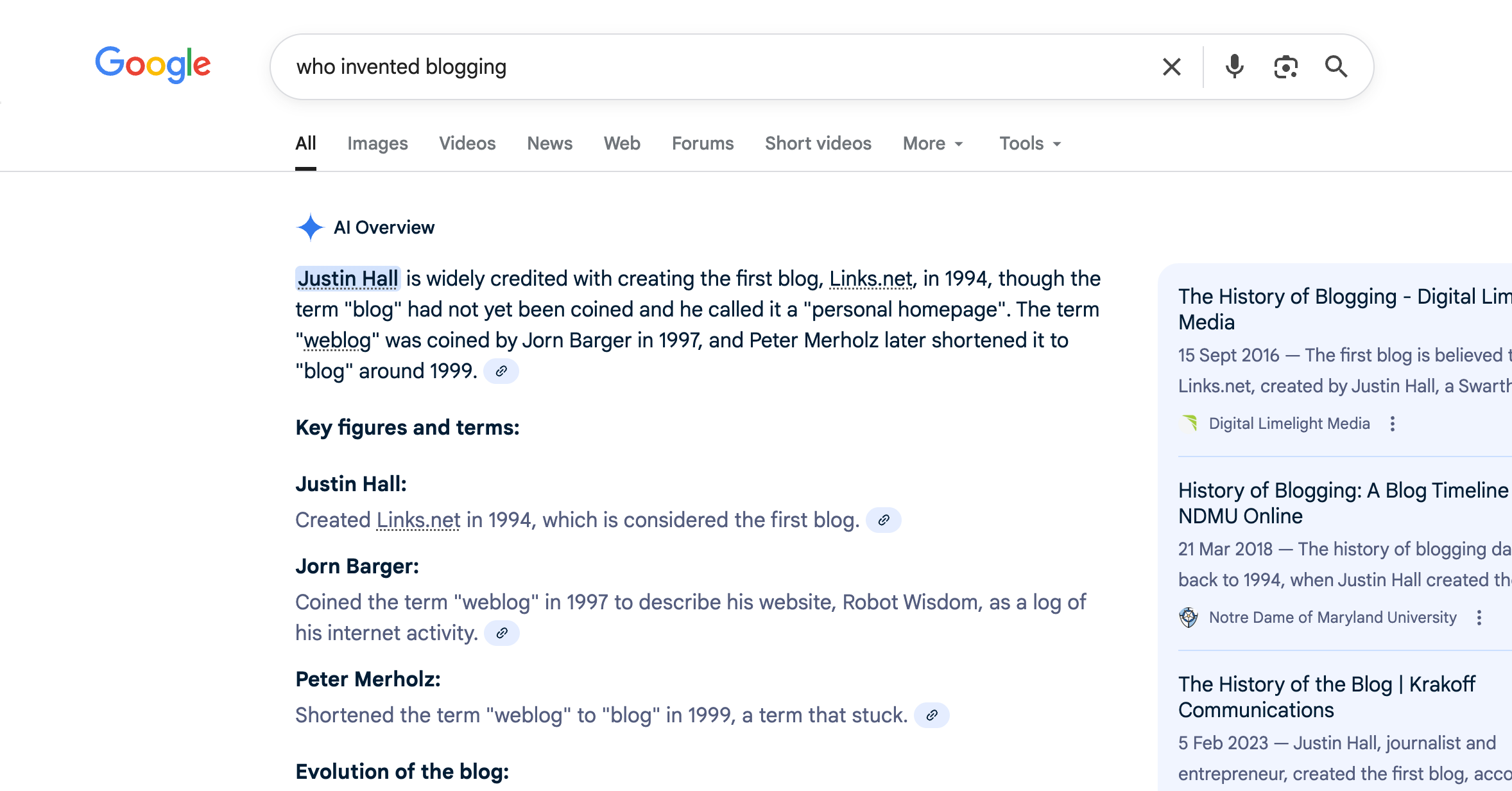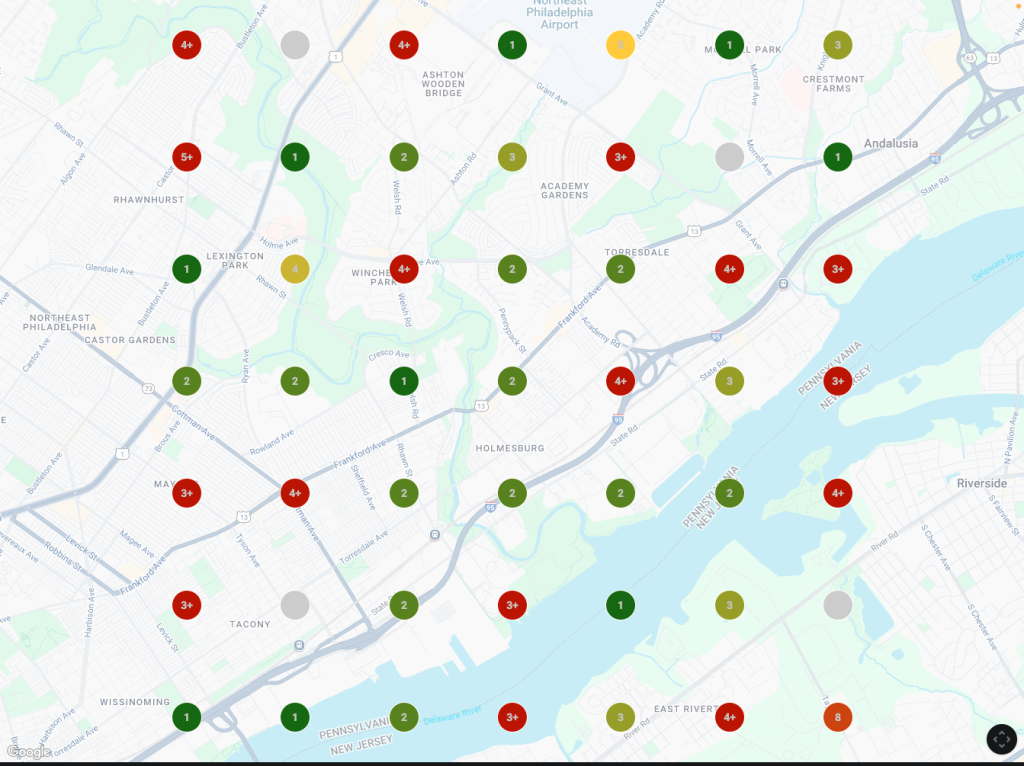How Long Before Your Content Starts to Rank in Google in 2025

You publish. You refresh. You wonder if Google’s “seen it yet.” Familiar story.
The short version hasn’t changed much: most sites see some movement within 1–3 months, clearer traction around 3–6 months, and meaningful, steady results 6–12+ months out—longer in head-to-head niches like finance or SaaS. That arc comes up again and again in industry timelines and guides.
But that’s only half the story now. Because 2025 brought a new gatekeeper at the top of many results: AI Overviews. And that, in turn, gave rise to GEO—generative engine optimization.
Let me explain why those two shift both how fast you get seen and what “getting seen” even means.
Google’s AI Overviews (the generative summaries often placed above classic blue links) rolled out widely through 2024 and expanded to many more markets and languages through 2025. That means a growing share of queries now show an AI answer first—with your page possibly cited inside that answer rather than just listed below. Multiple analyses tracked the expansion and its effects on user behavior and click-through.

Here’s the uncomfortable bit: when an AI summary appears, people click less on the traditional links underneath. A July 2025 analysis from Pew found users clicked a standard result about half as often when an AI summary was present (8% vs. ~15% of visits). Trade press summarized the same trend: fewer clicks when Overviews show. That doesn’t mean zero traffic, but it does change the math.
So the timeline question morphs. It’s not only “When do I rank?” It’s also “When do I get cited?” Being in the answer can send earlier visibility signals—even before your URL climbs to a top blue-link spot.
What “GEO” really means

GEO stands for generative engine optimization. It’s the process of shaping your pages so AI systems (Google’s AI Overviews, Gemini, ChatGPT, Perplexity, Copilot) are more likely to quote, cite, or recommend you in their answers. Think of it as SEO’s cousin: same family, different dance steps.
A practical way to picture it:
- Classic SEO goal: rank your URL high so people click it.
- GEO goal: get your wording, data, and brand pulled into the answer, with a visible credit or link.
And yes, they’re connected. Earning citations often correlates with having clear structure, source-backed claims, tidy schema, and authority signals—the same bones that help you rank.
Can AI-written content help you rank faster—or slow you down?
Short answer: AI content can rank. Google doesn’t punish content just because a model helped draft it. What it pushes down is low-value, mass-produced filler, especially when it’s made merely to game rankings. In 2024–2025 guidance and updates, Google repeated the same idea: tools are fine; thin, unhelpful content isn’t. So if you use AI, pair it with real expertise, sources, and editing.
What does that mean for speed? AI can cut writing time. It won’t shortcut trust. Pages still need feedback loops—links, dwell time, brand mentions, revisions. The human steps—fact-checking, adding personal experience, showing your process, linking to source data—are often what tip you into the citation layer of AI answers and help your classic rankings settle sooner.
Another way to look at it is that if you go all in with AI tools to write your content and just keep smashing the Publish button with no real oversight – Google or any other search engine is unlikely going to reward you with reliable results.
The click math: why being “the answer” beats position #1
Here’s the paradox. Ranking #1 used to feel like the finish line. Now, for many informational queries, a big summary might sit above you. If you’re inside that summary—named and linked—you can still win attention. If you’re not, your #1 can feel like #3, or worse.
Analyses from Pew and industry outlets in 2025 reported lower click rates when AI Overviews appear, which supports the idea that “featured or cited” is the new prize, not just “ranked.” If you aim to be source material—clear, well-structured, well-cited—you’re playing the right game for both classic SEO and GEO.
Quick reality check: AI summaries aren’t perfect. Several recent reviews highlighted accuracy gaps and odd omissions. That’s another reason to present verifiable facts, citations, and schema—you give the system clean material to pull.
WordPress playbook for GEO (practical, plugin-friendly moves)
Now that you know how the rules of the game are changing, I want to go over some tips and advice on how you can improve your chances of getting noticed by these AI systems. There is no guarantee, and the old rulebook of SEO still applies, but from my experience – this is how many of those systems work and interpret content.
a) Structure your answers like a good briefing
Open with a plain-language answer, then expand. Use short paragraphs; nest subheadings that mirror common queries (“How long does X take?”, “Is it safe?”, “What’s the cost?”). Add a one-sentence takeaway box near the top.
b) Feed machines with clean schema
Use a reliable SEO plugin to establish organization, article, FAQ, HowTo, product, and person schema. For advanced control, layer Schema Pro or a lightweight JSON-LD plugin for custom types. The goal: give AI a map to your facts.
c) Add receipts
Where you state something that could be cited, name the source (like I did earlier in the article: “Pew Research, July 2025”) and link it. Add published and last updated dates in the template (many themes and SEO plugins can display this automatically). We do this at the end of our posts, on top of including the publish date, we also mention how many times & when was the last time an article was updated.
d) First-hand experience matters
Include screenshots, short clips, and “we tested this” notes. Although it is not confirmed, one can assume that search engines like Google might favor visual content slightly more than sites who don’t use it, solely because chatbots like ChatGPT don’t generate images by default.
e) Make scannable chunks
Use Gutenberg FAQ blocks (most SEO plugins add FAQ schema to these) and Table of Contents blocks (e.g., Easy Table of Contents). Keep it human first, but machine friendly.
f) Speed + UX
Core Web Vitals still act like table stakes. Use plugins like LiteSpeed Cache (on LiteSpeed hosting) or WP Rocket (on most setups), plus Perfmatters for script control, and ShortPixel/Imagify for WebP. The side effect: fewer bounce-backs that make both humans and algorithms grumpy.
g) Internal links with intent
Link new posts from established, related articles. Tools like Link Whisper help surface sensible anchors. Keep anchors natural—answer-like phrases perform well for both readers and AI.
h) Credible author pages
Add author bios with credentials, headshots, and links to relevant profiles. Tie posts to those bios in schema. It’s a small lift that supports E-E-A-T. In other words, in a landscape full of bots – Google really wants you to showcase yourself as a real human being.
i) Content hygiene and consolidation
If you’ve got three thin posts that sort-of answer the same question, merge them into a single strong resource and 301 redirect the rest. It helps both organic ranking and your chances of being quoted.
j) Don’t forget images
Describe images with meaningful alt text and captions. When AI summarizes, image context can help reinforce your point and tag you as a helpful source.
Local/geo-intent: getting cited when the query is nearby

What if the query has a location angle? AI Overviews show up a lot for informational local questions (“how much is an eye exam in Phoenix”), sometimes alongside or above the Local Pack. Studies in 2025 observed high Overview presence for informational local queries and mixed patterns for the classic pack. Translation: being the explain-it-clearly resource can put you in that summary, even if proximity rules the pack.
Another 2025 whitepaper on local AI Overviews noted that location terms in the query can change how often Overviews appear, and that proximity alone isn’t the deciding factor for which sites get cited—content quality and local relevance matter. So service businesses should publish plain-spoken local explainers (pricing, process, timelines, what to expect), not only city landing pages.
Local checklist (brief, but mighty):
- Keep Google Business Profile pristine: categories, services, photos, questions answered.
- Build city/region explainers that answer actual questions people ask and include clear prices or ranges where possible.
- Add FAQ sections with schema on those local pages.
- Mark up addresses, service areas, and opening hours.
- Earn local links and reviews that back up your claims.
- Internally link local pages to the main hub article for that topic.
A realistic timeline
Alright. Let’s assume that you’ve just launched a new website/blog and you want to get your SEO/GEO game up and running as soon as possible. No matter which way you look at it, I think the most important thing is to reign in your expectations for how quickly you should see results.
Based on our client work and other projects that we work on – here is a realistic roadmap on what you should expect, but also on what you should do during the initial phases.
Month 0–1: Indexing and early signals
- New URLs get crawled and indexed. On healthy sites, that’s days; on new/quiet sites, sometimes weeks.
- You can still get an AI Overview citation during this phase if your page answers a narrow, low-competition question and you’ve nailed structure and sources—but treat this as a pleasant surprise, not a promise.
- Make sure your sitemap updates, internal links point to the new page, and the page loads fast.
Month 1–3: First movement
- Expect impressions and a handful of long-tail rankings.
- Tune headings, add a short answer box, and weave in an FAQ that reflects search queries you see in Google Search Console.
- Begin outreach for relevant citations/links. This isn’t about blast emails; it’s about being reference-worthy.
Month 3–6: Traction window
- This is where most pages that will succeed start to show meaningful growth—especially if you’ve hit topical depth and earned some authority.
- Push cluster content (supporting posts with clear internal links).
- For GEO: add call-outs, tables, definitions, and data points with source links so AI has modular snippets to pull.
Month 6–12: Stability or stall
- Competitive topics may finally crack page 1 here; others plateau.
- Re-publish with new data and sharpened structure if you’re stuck.
- Keep an eye on AI Overview presence for your queries. If you’re never cited, inspect the pages that are and reverse-engineer their structure + sourcing.
12+ months: Authority compounds
- The top of page 1 often belongs to older pages. Recent analyses suggest top ranking pages skew years old on average, reflecting the compounding effect of links, mentions, and updates. That’s sobering—and freeing. You’re building an asset, not a tweet.
Important overlay: if an AI Overview appears on your primary keyword, your goal isn’t only rank—it’s citation. In 2025 data, AI Overviews showed up on a growing share of queries and correlated with lower link clicks under the summary. Landing a visible citation keeps you in the conversation while your classic rank matures.
When to intervene, what to measure, how to keep momentum
Because systems like Google and their algorithms are entirely out of our control except for everyday technical aspects – it can be quite easy to get discouraged. Here are some suggestions for what to do if you feel like you’re not getting the results you want.
When to intervene
- After ~6 months, if you’ve got no impressions for the head term and weak long-tail, reassess the topic focus.
- If AI Overviews show for your main query but never cite you, rework structure: add a stronger answer block, tighter subheadings, clear sources, and a short data table or checklist.
- If engagement is poor, improve readability and UX (speed, scannability, visuals, examples).
What to measure (quick and honest)
- Impressions vs. position growth (GSC).
- Queries that trigger AI Overviews (manual sampling; log weekly).
- Citation presence: are you appearing in the Overview sources? Track wins with a simple sheet.
- Branded mentions in Overviews (especially for informational/local guides).
- Assisted conversions from pages in clusters—because support content often gets cited first.
How to keep momentum (mild repetition because it matters)
- Update. Consolidate. Cite sources.
- Earn a few high-fit links, not a heap of random ones.
- Build topic clusters and link them well.
- For local, keep GBP and reviews lively, and publish helpful neighborhood explainers.
Final notes for the long game
So, how long before your content starts to rank in 2025? The broad windows still hold—1–3 months for the first wiggles, 3–6 months for visible traction, 6–12+ months for stable positions—tempered by niche and competition. But there’s a new door at the top of the result: AI Overviews. If you want earlier exposure, aim not just for a position; aim to be quoted.
That’s where GEO lives—presenting information so clearly and credibly that an AI can lift it, with your name attached. If you’re on WordPress, you’ve already got the toolbox: SEO plugins for schema, cache plugins for speed, internal-link helpers, and block patterns that make answers skimmable. Add real expertise, real sources, and a little patience.
You know what? Slow can be good. Slow gives you space to gather proof, polish structure, and become reference-worthy. And right now, being reference-worthy is half the game.


